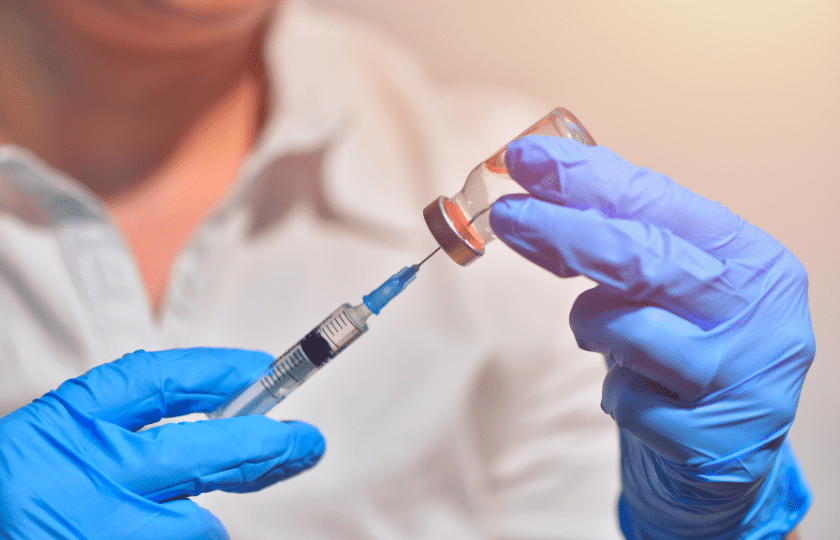The novel COVID-19 pandemic has initiated an unprecedented global vaccine race. As of September 27, 2020, there were more than 200 vaccine candidates in preclinical and clinical development, including 11 in phase 3 trials.
In the wake of the upcoming vaccine rollout for COVID-19, many Canadians have reported that they are prepared to wait longer due to fears of a “rushed” rollout. Interestingly, a recent poll conducted by Leger and the Association for Canadian Studies found that 65 percent of Canadians intend to take a COVID-19 vaccine once it is approved by Health Canada, not simply the Food and Drug Administration (“FDA”). Ten percent of Canadian do not wish to take the vaccine, in contrast to an astounding four in ten Americans who say they will not get vaccinated.
As a personal injury lawyer, this growing public dissonance towards the vaccine begs the question whether there will be an uptake in personal injury lawsuits from possible vaccine-related injuries. While vaccine-related injuries, albeit generally minor, are inevitable, injured parties may be more likely to initiate claims for the administration of a “rushed” vaccine on the basis of negligence, failure to warn, and malpractice.
Despite the possible uptake in personal injury claims, Canadian case law continues to show the difficulties with litigating a toxic tort case: the scientific burden of proof is a historically difficult hurdle to climb.
To date, scientific studies establishing a causal link between vaccines and various ailments are primarily epidemiological. Epidemiological studies attempt to draw inferences, or causal links, based on the statistics of disease presence within the population as a whole, or defined groups thereof.
Canadians courts have traditional found that epidemiological studies do not meet the civil burden of proof, despite standing at a far lower threshold than the scientific burden of proof.
In Ontario, the case law on vaccine-related personal injury claims have typically failed to succeed on claims based in negligence, malpractice, and failure to warn. In Rothwell v Raes, 1988 OJ No 1847, the infant Plaintiff received doses of multi-purpose vaccine to protect against diptheria, pertussis, tenanus, and poliomyelitis. The infant was inoculated at 3, 4, and 5 months. One month after the third shot was administered, serious developmental abnormalities presented in the infant: he was blind, almost deaf, and suffering from severe brain damage.
The Plaintiff, through his litigation guardian, initiated a claim arguing inter alia that the physician was negligent for the administration of the vaccine, the manufacturer was negligent for failure to warn and the Crown was negligent for its distribution of the vaccine. As is the difficult case in most product liability claims, the Court was tasked with determining whether the vaccine, on a balance of probabilities, caused the plaintiff’s brain damage.
The Plaintiff carried the difficult task of establishing a causal link between severe brain damage and the vaccine. The Plaintiff relied upon five epidemiological to adduce causation. While the Court noted this was a tragic case, it found that the anecdotal case reports merely raised a hypothesis of a causal relationship, which required further research.
A similar outcome was reached in British Columbia Court of Justice in Trueman v Ripley, 1998 BCJ No 2060. In Trueman, the plaintiff claimed that the drug Halcion caused personality changes, episodes of memory loss, and extreme behaviour that lead to criminal convictions. The Court allowed the defendant physician’s application for summary dismissal on the basis that the plaintiff failed establish a causal link between the drug and the above-mentioned defects. The plaintiff relied on epidemiological studies to establish causation, which the court found were nothing more than anecdotal.
To avoid a possible onslaught of COVID-19 vaccine-related litigation, Canada could adopt a no-fault compensation fund for vaccine injury, which is currently in place in 24 countries cross the world and in Quebec. A no-fault scheme could alleviate the overall burden on the justice system and provide compensation to injured parties who may otherwise never succeed in litigation.
While it is still unclear as to how and when the COVID-19 vaccine will roll out in Canada, the mounting fear of vaccine-related injuries and the unprecedented lack of public confidence in the COVID-19 vaccine suggests that Canadian courts may be faced with numerous personal injury cases in the near future. How the courts will deal with the historical causation problem in toxic tort litigation remains to be seen.
For more information regarding topics covered in this post, please contact me or one of the other members of our legal team and we will be happy to assist you.
Kaitlin Brennan
Associate – Personal Injury and Litigation Law Groups
Disclaimer: This article is provided as an information resource. This article should not be relied upon to make decisions and is not intended to replace advice from a qualified legal professional. In all cases, contact your legal professional for advice on any matter referenced in this document before making decisions. Any use of this document does not constitute a lawyer-client relationship. Please note that this information is current only to the date of posting. The law is constantly changing and always evolving.
